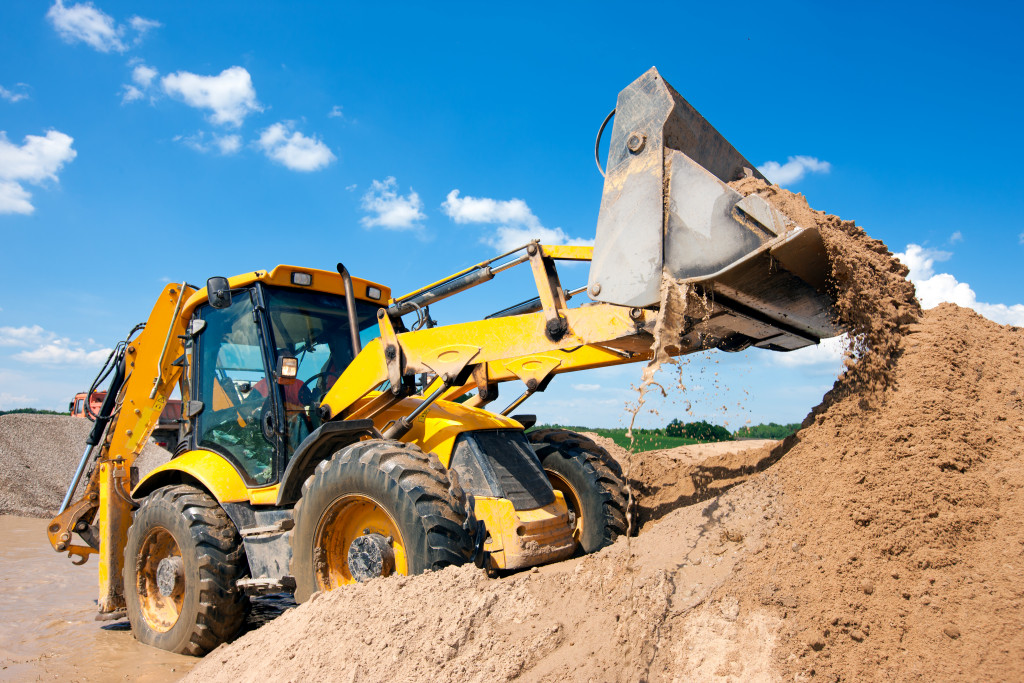- To ensure that construction equipment operates efficiently and safely, it is necessary to conduct regular inspections.
- To prolong the lifespan of the equipment, it is important to follow appropriate handling, operating, cleaning, and maintenance procedures.
- To ensure that the equipment performs at its best, it is important to adhere to the manufacturer’s guidelines and store it securely.
- Using the appropriate fuel types for various engines or motors is crucial to achieving the best performance and preventing expensive repairs.
In the construction industry, essential equipment maintenance procedures are crucial for safety and productivity. Without proper care and maintenance of construction equipment, workers can be exposed to dangerous working conditions and costly delays in project completion.
Contractors must ensure their staff knows proper equipment maintenance techniques to work safely and efficiently on any job site. This article will outline the essential steps to maintain construction equipment to maximize lifespan and performance while ensuring workplace safety.
Regularly Inspect Equipment
Regular equipment inspections are crucial to maintenance in any construction project. These inspections involve thoroughly examining equipment to ensure proper functioning and efficiency. Such inspections guarantee that the equipment is running optimally and prevent costly breakdowns and repairs that can halt the construction process.
Additionally, always ensure that you meet the daily crane inspection requirements set by OSHA to ensure that your cranes are safe to operate and operate more efficiently. These standards ensure cranes are inspected for damage or wear before each use.
It is important to note that overlooking regular inspections can have long-term consequences, including putting workers and others at risk, and also mean expensive equipment replacements that could have been avoided with proper care and attention.
Ensure Proper Handling and Operation
Ensuring proper handling and operation of construction equipment is critical for keeping it in prime condition. Here are some key steps to do this:
Perform Cleaning and Maintenance Procedures
Performing cleaning and maintenance procedures is an essential aspect of equipment maintenance in construction. It involves cleaning and inspecting the construction equipment, tools, and machinery for any damage or wear and tear that may hinder their performance.
Performing such measures ensures that the construction equipment is always in good working condition, thus minimizing downtime, prolonging its lifespan, and reducing the cost of repairs and replacements. Failure to carry out cleaning and maintenance procedures can lead to equipment failure, safety hazards, and decreased productivity.
As such, construction workers need to understand the significance of this practice and incorporate it into their daily routines. By doing so, they can ensure that the equipment stays functional and performs optimally throughout the construction process.
Follow the Manufacturer’s Guidelines

Following the manufacturer’s guidelines for repairing and replacing parts is an essential equipment maintenance procedure in construction. These guidelines ensure equipment’s proper function and safety; ignoring them can lead to serious consequences. The importance of safe operation cannot be overstated when working with heavy machinery and equipment.
The manufacturer’s guidelines are created based on their expertise and experience in building and designing the equipment, so it’s crucial to follow them precisely. This will prolong the lifespan of the equipment, reduce the likelihood of accidents, and avoid costly repairs and replacements in the future. Construction workers and operators prioritize safety and adhere to guidelines to ensure everyone’s well-being.
Store Equipment in a Safe Location
Storing equipment in a safe location when not in use is a crucial equipment maintenance procedure in construction. It involves finding a secure and specific location that is easily accessible to prevent theft or misplacement of the equipment.
This procedure includes inspecting and cleaning the equipment to ensure it is in good condition before storage. Proper storage also involves checking for the appropriate temperature and humidity levels that will not damage the equipment’s components.
Failing to store equipment properly can lead to costly repairs or even replacement, impacting project timelines and budgets. Therefore, it is essential to follow this procedure to extend the equipment’s lifespan and ensure it is always in optimum condition when needed.
Utilize the Correct Fuel Types

As an essential equipment maintenance procedure in construction, utilizing the correct fuel types for different engines or motors is crucial. This is important because using the wrong fuel type can lead to several issues, such as decreased performance, engine damage, and increased fuel consumption.
It is important to note that different engines require different fuel types depending on design, size, and fuel injection system factors. As an expert in maintenance, ensuring that the correct fuel type is used for each engine or motor is crucial in keeping the equipment operating efficiently and preventing costly repair bills.
Keep Up to Date With Service Records
Maintaining up-to-date service records, logs, checklists, and scheduling tasks is crucial for effective equipment maintenance in the construction industry. Service records document what has been performed on equipment and when, while logs allow the working status of equipment to be tracked regularly.
Checklists help avoid missing important maintenance tasks and ensure routine tasks are performed consistently. Scheduling tasks and regular maintenance follow-up help prevent equipment breakdowns, save costs, and increase the life span of the equipment. As construction equipment is essential to complete any project efficiently, keeping all relevant documentation up to date ensures minimal downtime and maximum productivity.
These are the essential steps for maintaining construction equipment and ensuring workplace safety. Contractors can ensure the safety of their staff, timely completion of projects, and minimize maintenance expenses by adhering to them.




